
Trek Staff Reviews – Is It Safe? Experts Advice
In the world of outdoor exploration, few tools are as understated yet profoundly effective as the trekking staff, often referred to as a trekking pole. Whether you’re scaling the Himalayas, exploring dense forests, or hiking along coastal cliffs, a reliable trek staff can drastically improve your stability, endurance, and overall hiking experience. This comprehensive guide dives into the importance, types, benefits, usage tips, and considerations for choosing the perfect trekking staff.
Introduction to Trekking Staff
A trekking staff is a supportive hiking aid used to maintain balance, reduce strain on joints, and enhance mobility over uneven terrain. Traditionally made of wood, modern trekking poles are typically constructed from lightweight metals like aluminum or carbon fiber, and often feature ergonomic grips, shock-absorption systems, and adjustable lengths.
Despite their simple appearance, trekking staffs play a critical role in supporting physical efficiency and preventing injuries on trails, especially during long treks or in rugged environments.
Historical Background
The use of walking staffs dates back centuries, featuring in both practical and symbolic roles. In ancient times, pilgrims and shepherds relied on staffs to traverse long and often perilous journeys. Over time, as hiking and mountaineering became recreational pursuits, these staffs evolved into more specialized equipment.
Modern trekking poles gained popularity in the 20th century with the rise of alpine hiking in Europe and North America. Today, they are considered essential gear for both amateur and seasoned adventurers alike.
The Science Behind Trekking Poles
Trekking poles function by redistributing some of the effort and pressure from the lower body to the upper body. This biomechanical support can reduce impact on knees by up to 25%, especially during downhill movements. By involving the arms and shoulders, poles help hikers maintain better posture and rhythm, which leads to increased endurance and balance.
Studies conducted by sports and outdoor medicine researchers confirm that consistent use of trekking staffs leads to reduced muscle fatigue, improved cardiovascular performance, and enhanced stability, particularly for older or less experienced hikers.
Types of Trekking Staffs
Understanding the different types of trekking staffs helps in choosing the one that suits your needs:
1. Single Staff vs. Pair of Poles
-
Single Staff: Typically used for walking on even terrain or by hikers who need a lighter load. It offers moderate balance support.
-
Pair of Poles: Offers bilateral support and is ideal for tough terrains. Distributes weight more evenly, useful for long-distance treks.
2. Telescoping Poles
These poles can be extended or collapsed to suit terrain and user height. Ideal for variable elevation hikes, they are easy to pack and adjust.
3. Folding Poles
Designed for ultralight hikers, folding poles collapse down like tent poles. They are compact and easy to carry, but may offer slightly less durability.
4. Fixed-Length Poles
Best for experienced hikers who require a no-fuss setup. They are typically stronger but less versatile in terms of adjustability.
5. Shock-Absorbing Poles
Equipped with internal springs to absorb impact, these are perfect for downhill treks or individuals with joint issues. They can usually be turned off for uphill climbs.
6. Standard Poles
These lack suspension systems but are lighter and preferred by hikers who value simplicity and minimalism.
Key Features to Look For
When shopping for a trekking staff or poles, consider the following features:
1. Material
-
Aluminum: Durable, heavier, cost-effective.
-
Carbon Fiber: Lightweight, expensive, but can break under extreme stress.
2. Grip Types
-
Cork: Adapts to hand shape, absorbs sweat, and reduces vibration.
-
Foam: Soft and moisture-absorbing, ideal for hot climates.
-
Rubber: Insulates from cold but may cause chafing in warm weather.
3. Adjustability
Length adjustment is crucial for maintaining the correct posture and preventing injuries. Most poles feature locking mechanisms like twist locks or lever locks.
4. Wrist Straps
Help transfer part of the load to your arms and keep the poles attached in case of accidental drops. Padded straps improve comfort.
5. Baskets
-
Trekking Baskets: Small, prevent poles from sinking into mud.
-
Snow Baskets: Larger, designed for snowy conditions.
6. Pole Tips
-
Carbide Tips: Durable, great for rocky terrains.
-
Rubber Tips: Good for pavements and reduce noise.
Benefits of Using a Trekking Staff
1. Improved Stability
Trekking staffs provide multiple points of contact with the ground, reducing the risk of slips and falls, especially in wet or icy conditions.
2. Reduced Joint Strain
By transferring weight away from knees and hips, they ease the impact during descents and help hikers with pre-existing joint issues.
3. Enhanced Endurance
They enable a rhythmic walking pattern, helping hikers cover more distance with less fatigue.
4. Posture and Breathing
Using trekking poles encourages a more upright posture, which improves lung capacity and breathing efficiency.
5. Multi-functional Tool
Can be used to test depth of water or snow, clear brush, ward off animals, or even serve as tent poles in ultralight shelters.
6. Upper Body Workout
Engages the shoulders, chest, and arms, offering a more holistic exercise during your hikes.
How to Use Trekking Poles Correctly
To maximize the benefits of a trekking staff, correct usage is essential:
1. Adjusting the Length
-
On flat terrain: Elbow should form a 90-degree angle.
-
Uphill: Shorten the pole.
-
Downhill: Lengthen the pole for added support.
2. Walking Technique
-
Move the pole opposite to your stepping foot (diagonal pattern).
-
For steep ascents, plant both poles ahead and push with arms.
-
On descents, plant poles ahead for controlled lowering of the body.
3. Using Wrist Straps
-
Insert hand from underneath the strap and grip over it. This allows the strap to support your weight instead of relying solely on grip strength.
4. Packing and Carrying
Fold or collapse poles when not in use. Most hiking backpacks come with loops or clips for attaching poles externally.
When Not to Use Trekking Poles
Despite their advantages, there are certain scenarios where trekking poles may be unnecessary or even disadvantageous:
-
Rock Scrambling or Climbing: May hinder hand mobility and create safety hazards.
-
Flat Urban Trails: Offers little benefit unless used for fitness walking.
-
Environmental Concerns: Using poles can damage fragile ecosystems. Use rubber tips and tread lightly.
Trekking Staffs for Different Terrains
1. Mountains and Hills
Shock absorption, strong material (aluminum or carbon), and adjustable length are crucial.
2. Forests and Jungles
Look for cork or foam grips (for moisture), and poles with mud baskets to prevent sinking.
3. Snowy Terrains
Snow baskets, insulated grips, and anti-shock mechanisms are recommended.
4. Desert and Dry Terrain
Lightweight poles with breathable grips and rubber tips for hard surfaces.
Best Practices and Maintenance
To extend the life and functionality of your trekking staff:
-
Regularly check locking mechanisms.
-
Clean after use, especially if exposed to salt, mud, or sand.
-
Store in a dry place, preferably collapsed to avoid stress on joints.
-
Replace tips when they show signs of wear or become loose.
Choosing the Right Trek Staff for You
When deciding on a trekking staff, consider the following factors:
1. Your Trekking Style
-
Occasional walker? Opt for a basic adjustable aluminum pole.
-
Frequent adventurer? Invest in high-quality carbon fiber poles.
2. Budget
Trekking staffs range from $20 to $200+. Higher-end models offer better materials and comfort, but many mid-range poles perform excellently.
3. Body Type
Choose poles that suit your height and weight. Heavier individuals may benefit from sturdier poles, while lighter hikers can use ultralight models.
4. Environmental Impact
Some poles are made from recycled materials or eco-friendly components. Look for sustainable brands if this aligns with your values.
Popular Brands and Recommendations
Here are some well-known brands with a solid reputation for quality trekking staffs:
-
Black Diamond – Known for innovation, quality, and durability.
-
Leki – German-engineered, comfortable, and packed with features.
-
REI Co-op – Great performance at a reasonable price.
-
Komperdell – Lightweight and reliable, favored by European hikers.
-
Cascade Mountain Tech – Budget-friendly and widely available.
Trekking Staff vs. Walking Stick: What’s the Difference?
Many beginners confuse the trekking staff with a basic walking stick. While both serve a similar purpose, there are distinct differences:
| Feature | Trekking Staff | Walking Stick |
|---|---|---|
| Material | Metal/Composite | Wood |
| Design | Engineered, often adjustable | Basic, fixed length |
| Weight | Lightweight | Heavier |
| Features | Shock absorption, straps, baskets | None or minimal |
| Terrain | All terrains | Basic trails or urban use |
Final Thoughts
A trekking staff is more than just a walking aid—it’s a strategic tool that enhances your performance, confidence, and enjoyment on the trail. Whether you’re a seasoned mountaineer or a weekend hiker, investing in a quality trekking staff can transform your outdoor experience.
By choosing the right staff, learning proper technique, and respecting the environment, you’ll not only safeguard your health but also enrich every journey you take into the wilderness.

![Zanari CBD Gummies Reviews [NEWEST UPDATE] Every USA Customer Must Know Before Spending!!! Zanari CBD Gummies Reviews [NEWEST UPDATE] Every USA Customer Must Know Before Spending!!!](https://bingnews24x7.com/wp-content/uploads/2025/10/Golden-Fountain-Farms-CBD-Gummies-150x150.png)



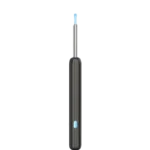

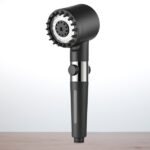
![Green Nature Farms CBD Gummies Reviews [Website Fact Check!] Know The Truth Before Buying! Green Nature Farms CBD Gummies Reviews [Website Fact Check!] Know The Truth Before Buying!](https://bingnews24x7.com/wp-content/uploads/2025/09/Golden-Fountain-Farms-CBD-Gummies-150x150.png)
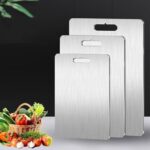







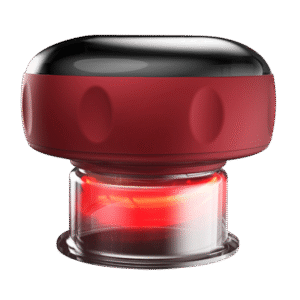
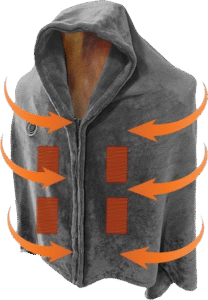
Average Rating